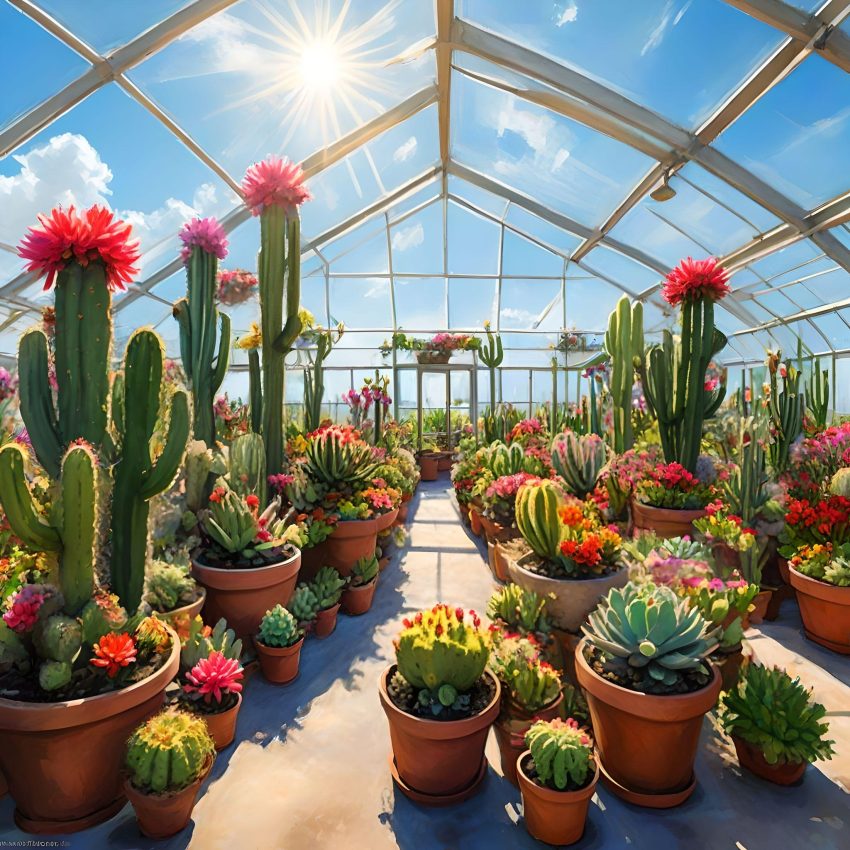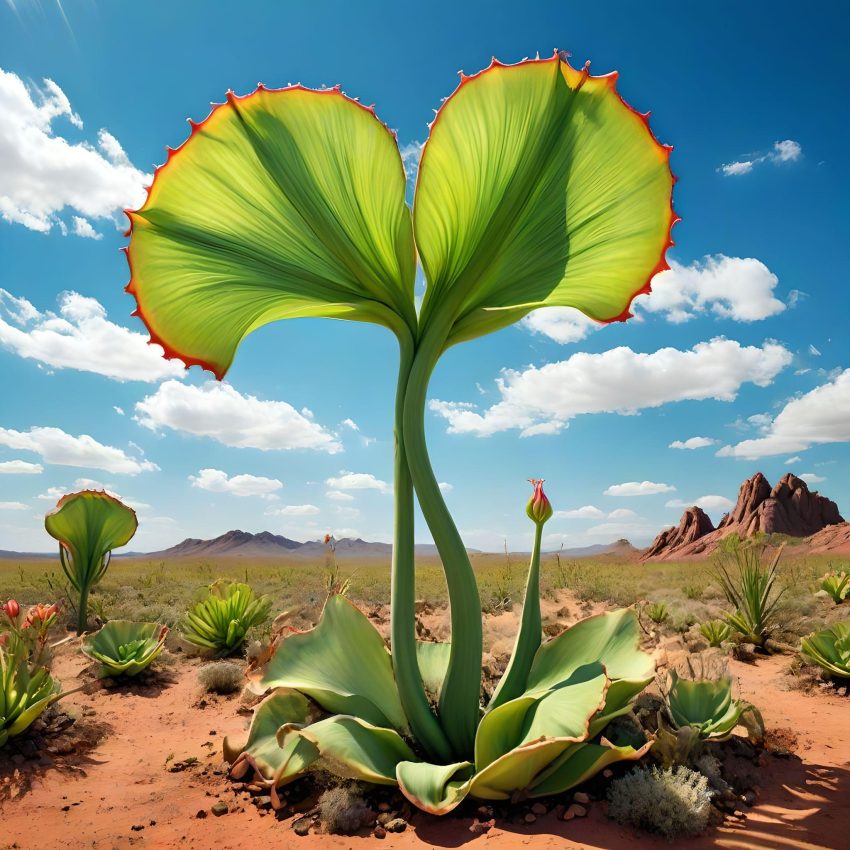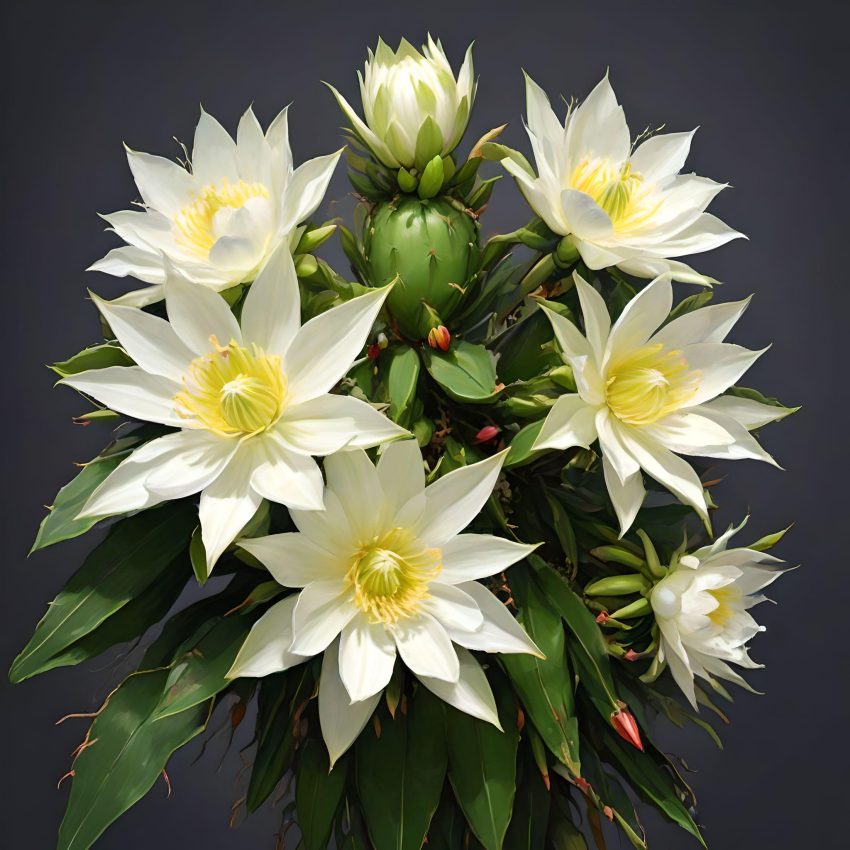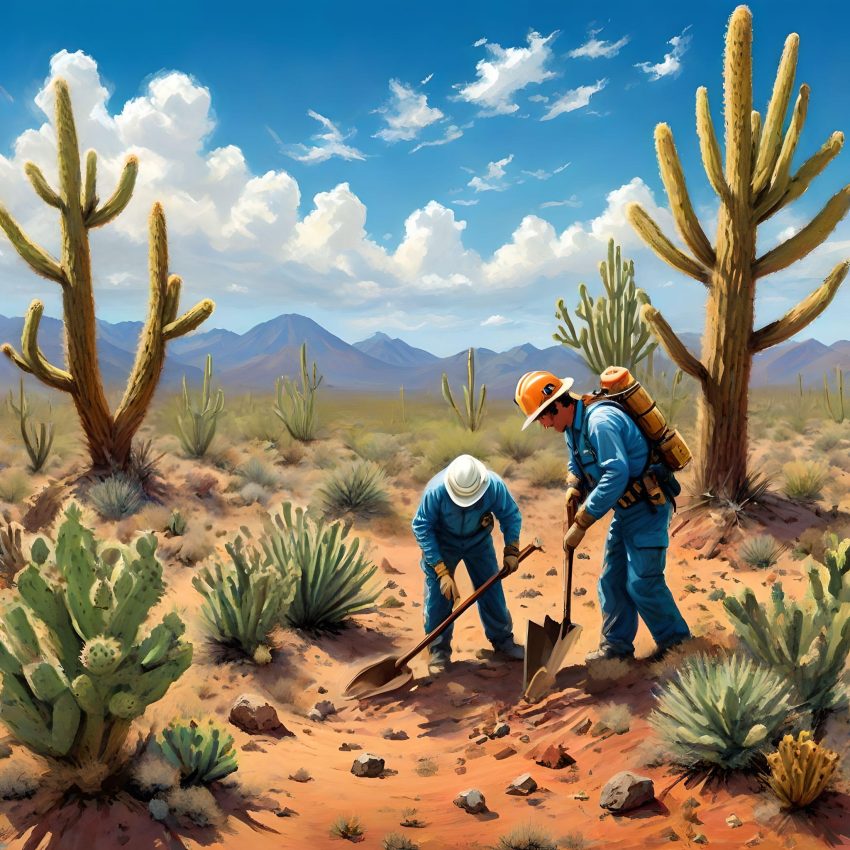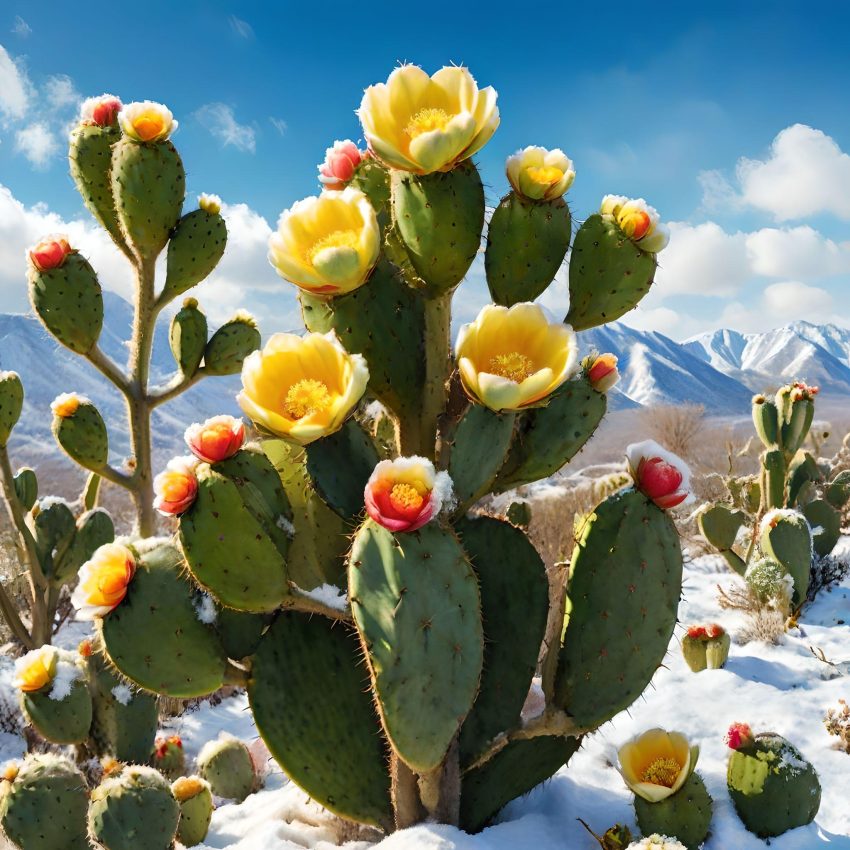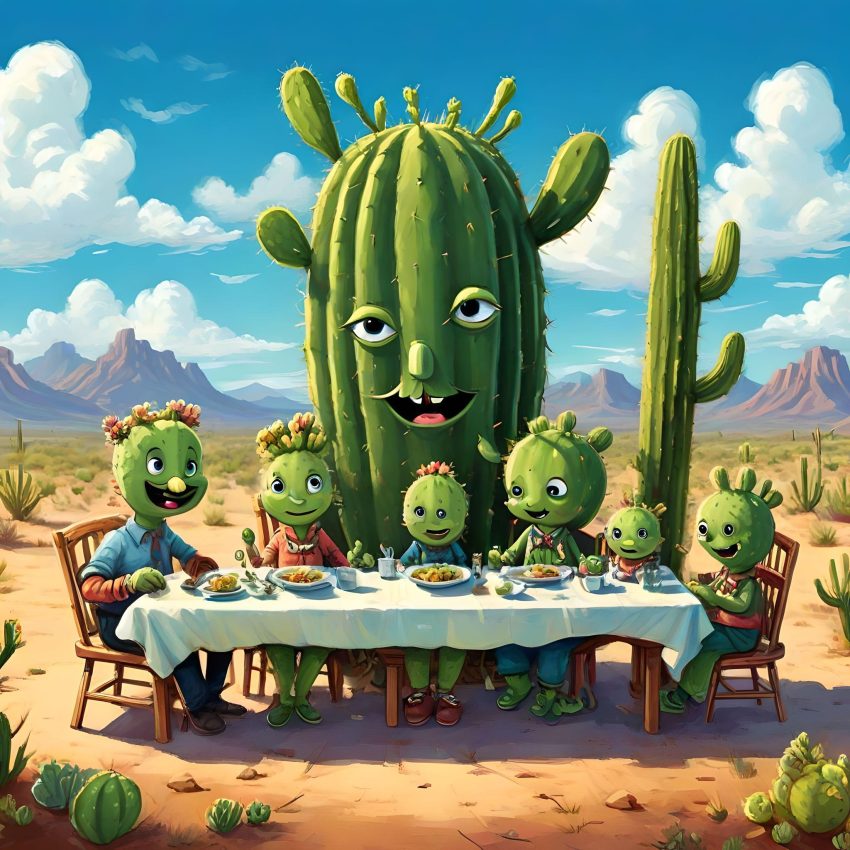In April of 1989, after due preparation, Marina Welham launched a business, catering to hobbyists who share her love for growing and learning about cacti and other succulents.
“Virtual Marina” and BB the Talking Parrot: Magical New Image Creation by AI
Technology has leaped and bounded forward in the past decade. Image rendering is now almost miraculous. In 2017, when I began to rescue Marina’s cactus imagery from The Wayback Machine, there was no way to clearly enlarge the tiny pictures. By 2020, there were enlargers online.
Menu Madness
TADA was down for a couple of days because half the top menu was ripped out by unknown causes. Might have been a PHP problem; might not. Part of it has been restored, I’m still still working on the rest. Sorry for the inconvenience.
The Tragedy of the Theft of Marina’s Plants by the BC Public Trustee: The Potential of a Commemorative Collection Was Destroyed
Everyone knows the expression, “The gift that keeps on giving.” The disappearance of Marina’s plants in the hands of the BC Public Trustee is “the theft that keeps on taking”.
Hylotelephium / Sedum
Many thanks for your recent e-mail searching for information on Hylotelephium. This generic name was erected some years ago, in 1977 to be precise, by H. Ohba, with Sedum telephium as the type.
Notocactus or Parodia?
I am probably opening a can of worms here. As Notos are my favourite genus, I’ll try not to get emotional! Up until fairly recently, the accepted classification of Notocactus was that of Buxbaum.
Please Help Me Save My Grandma’s Jade
Grandma died (rest her soul) and left this huge Jade behind with no instructions how to look after it. It was very healthy but now, after a year in my care, the plant looks very sick. There are brown spots on the leaves, the stems are falling over and the plant has never flowered.
Notes on Growing Welwitschia mirabilis (Hook. E) From Seed
By Ed Perfect, Kitchener, Ontario Featured image: AI-generated text-to-image of Welwitschia mirabilis in flower. Welwitschia mirabilis is a unique, tap-rooted plant from the Namib desert in the south-west of Africa. Because of its rarity and tap-rooted (non-clustering) nature, the only practical method of propagation is by seed. I have about ten years experience
Notocactus Uebelmannianus
Notocactus uebelmannianus flowers at an early age. In fact it flowered the first year and quickly outgrew the small two inch pot it came in. I grow most of my cacti in a mixture of John Innes compost mixed with coarse grit and perlite in the ratio of one part grit, one part Perlite to three parts John Innes.
Photos: Caudiciforms and Other Neat Collectibles
We hope you enjoy these photos of plants provided by members of THE AMATEURS’ DIGEST. These photos have either been published in our past issues or will appear in future issues with more detailed information including advice on how to grow them.
Opuntia Pachypus
Those who often dismiss opuntias as nothing but prickly, uninteresting plants, might be overlooking some very interesting species not the least of which is Opuntia pachypus. This cactus was first described by Karl Schumann in 1904.
Christmas Cactus (Schlumbergera)
There are many hybrids of the Christmas Cactus. And it is, by the way, really a cactus. Plants and flowers can vary in shape and color. Flowers may be white or almost any shade of pink or red.
A Celebration Of Succulents By Amateur Hobbyists On CD-ROM
50 pages of articles with photos PLUS 1750 color photographs of cacti, other succulents, caudiciforms & collectibles. 215+ genera, 1100+ species, subspecific taxa & hybrids. BIG selection of Caudiciforms & Other Collectibles: 75+ genera, 300+ species and around 250 photos of 25 genera of cold hardy species, hybrids and varieties including many plants never before published.
Cacti and Succulents from Seeds Booklet Produced by The Amateurs’ Digest
Anderson’s taxonomy is apparently controversial. Bill Hendricks of Klyn Nurseries was outraged by some of the changes made, and criticized Marina for following Anderson’s new approach.
Join The Cactophile Club! A Proud Member of the New International Network in Marina’s Honour
Coming soon! THE CACTOPHILE CLUB is a proud member of The Cactophile Network, a new online community by and for cactus fans and succulent enthusiasts, to carry on Marina Welham’s dream of a global fellowship of cactus fanciers.
“Pachypodiums In Our Garden” by Jürgen Lenz for The Amateurs’ Digest
In April of 1989, after due preparation, Marina Welham launched a business, catering to hobbyists who share her love for growing and learning about cacti and other succulents.
A Huge ‘Thank You’ to Chuck Staples for Marina’s Heritage
Wow! A treasure-trove of Marina’s digital editions of The Amateurs’ Digest and Supplements landed in my email inbox on Wednesday, April 19th, 2023 by surprise.
Nelson, Cook, Bligh and Albuca nelsonii by Chuck Staples for The Amateurs’ Digest in Vol. 25, No. 1
Born in London, England in the 1740s, David Nelson became a seaman and gardener-botanist. Not much is known about his early life. However, after having a small amount of botanical training and instruction by Joseph Banks (1743–1820) and William Aiton (1731–1793) before embarking on the HMS Resolution in 1776 with James Cook (1728–1779) as its commander, David Nelson became the botanical collector on this voyage.
Nikolai Michailowicz Przewalski (1839–1888) by Chuck Staples For the Amateurs’ Digest in Vol. 25, No. 2
Nikolai Michailowicz Przewalski (1839–1888) was an important geographer and explorer in central areas of Asia at various times from 1867 to 1886 and was immortalized by discovering a Sedum and a wild horse, both named in his honor.
Commiphora humbertii by Marina Welham
The Afrikaans common name “kanniedood” (literally “cannot die”) refers to the exceptional ability of all commiphoras to retain their water content and withstand drought for long periods. To my knowledge, very little is written in C&S; literature or on the internet on the succulent commiphoras.
Christmas Cactus: Horrors … The Flowers Fell off My New Plant
Plants have been flowering away for several weeks in shops and garden centers. You bought one, attracted by the lovely flowers, and soon after you got it home, all the buds and/or flowers fell off. You may wonder why.
To Water or not to Water — That is Always the Question and … Major Requirements for Succulent Plants
If anyone has ever told you that cacti and succulents don’t ever need much water, be assured that they are dead wrong. It is a widely believed myth that cacti and succulents need very little water, if any, and that cacti in particular can go forever without it.
The New Plant
Buying a new plant is exciting. If it is healthy when you buy it, it should give you years of enjoyment. The most critical time in the life of your new plant is going to be the first few weeks in your care.
Suitability of Various pH Values for Plants
The intensity of the acid/alkali reaction of soil or compost is commonly expressed in terms of pH units. pH stands for pondus hydrogenii, the concentration of hydrogen ions.
How Dangerous are Euphorbias?
Post-mortem examination of people killed by Euphorbia latex has revealed severe inflammation of the walls of the stomach and intestine and in some cases the wall of the stomach has been perforated. The poison is called euphorbon about which little is known.
Epiphyllums … Epi Hybrids … Orchid Cactus
Epiphyllums (type Epiphyllum phyllanthus) are epiphytic cacti with flattened leaf-like stems and large white flowers that open at night. Outer petals usually have some color, usually yellow.
Jatropha Berlandieri (Seeds)
This species is occasionally known as Jatropha cathartica and not very common in collections here. It is highly prized as a neat, compact and handsome plant, bearing many small and pretty red flowers in midsummer, being very suitable for the show bench.
Producing a Few Seeds From Your Own Collection
Some cacti form fruit with viable seeds by means of self-pollination. Two of the best examples of plants producing seeds themselves are found in the genera Mammillaria or Rebutia.
How to Send Succulent Plants by Mail
Cacti and succulents can safely be sent through the mail, but if you are mailing plants from one country to another, you should contact the Plant Protection Division of the Department of Agriculture for that country to find out what the guidelines are about plants you are allowed to mail and where you can mail them.
Having Trouble With Your Adeniums? Here Are Some Tips to Help
Adeniums are from Arabia through Kenya to Tanzania and also south-west Africa. They are stem succulents with thickened tuberous stems and thick branches not to mention lovely flowers. The milky sap of adeniums is VERY poisonous.
Feeding Our Succulents
Is your succulent collection a hospital of plants you play nurse to every day? Are you frequently tossing out plants that just won’t grow for you? Are you tired of seeing flowering plants in books and journals and other collections while your same plants sit there doing nothing from one season to the next?
The Rooting of Stems of Ceraria Namaquensis
Ceraria namaquensis belongs to Family Portulacaceae and has a fairly widespread habitat in South Africa and Namibia. I have had plants of this grafted on to stems of Portulacaria afra for many years.
Desert Salvage
As summer gardening work slows down for all of us, it is the busiest season of all for people who salvage desert trees. These are called ‘devegetation contractors’ who work ahead of the bulldozers to save mature ironwoods, palo verdes and mesquites from the destruction of plant habitats due to new houses being built and road construction.
Senecio Rowleyanus, Family Asteraceae (Compositae), Common name: “String-of-Pearls”
Senecio rowleyanus has small spherical leaves about 1/4 inch in diameter. These are strung on thin stems like beads of a necklace. The stems also carry adventitious roots which grow down into the soil as the stems lengthen …
Crests and Monstrose Plants Are My Passion
I have a big passion for collecting and showing crested plants and I am almost as fond of the monstrose forms. My collection has over 100 crested and monstrose plants of both cacti and the other succulents.
The Flowering of Echinopsis Subdenudata
As you can see, this is not a terribly attractive specimen … lumpy, scarred, sparsely covered with small but very sharp spines. Nevertheless once a year it produces one or two very large, pure white flowers. They open in the middle of the night, and last only through the next afternoon.
Marina’s Greenhouses
Marina had two greenhouses, one on the back of the home, the other on the grounds at 8591 Lochside Drive, North Saanich, British Columbia, former headquarters of “The Amateurs Digest”.
Photos From His Cold Hardy Cactus Collection (6)
Opuntia engelmannii (tardospina ) flower; plant and photo Bill Hendricks, USA. And: Opuntia engelmannii (tardospina ) fruit; plant and photo Bill Hendricks, USA
Photos from his Cold Hardy Cactus Collection (5)
Cold-hardy cactus: Opuntia basilaris v. aurea and an Opuntia basilaris hybrid. Plants and photos, Bill Hendriks, USA.
Photos from his Cold Hardy Cactus Collection (4)
Cylindropuntia (Opuntia ) Magenta flower, plant and photo (Bill Hendricks, USA). Photos from his Cold Hardy Cactus Collection.
Photos from his Cold Hardy Cactus Collection (3)
Cold-hardy cactus: Cylindropuntia (Opuntia) whipplei. Plant and photo by Bill Hendricks, USA.
Photos from his Cold Hardy Cactus Collection (2)
Cold-hardy cactus: Cylindropuntia (Opuntia) viridiflora, Santa Fe County, New Mexico. Plant and photo by Bill Hendricks, USA.
Photos from his Cold Hardy Cactus Collection
Cold-hardy cacti. Bill’s cold hardy cactus garden in summer and winter, featuring Cylindropuntia (Opuntia) davisii and Cylindropuntia (Opuntia ) imbri. Plants and photos by Bill Hendricks, USA.
Amorphophallus rivieri ‘konjac’. The Voodoo plant … An Interesting Stinker
The unplanted tuber showing the flower beginning to emerge. February 19th it was 6 inches high. It grew to 12 inches by March 16th and as you can see in the next photo, it grew to 36 inches tall by March 24th.
Semperviviums: Grandma’s Favorite Enjoys Renewed Popularity
Nearly everybody’s grandma grew Hen and Chicks in her garden. She could enjoy these reliable succulents with minimum time spent on their care. Each year the central, fleshy rosette would surround itself with little duplicate plants, hence Hen and Chicks.
Islaya
These plants grow in the most inhospitable place possible, the dry coastal deserts of Peru and Chile, a desert directly on the coast of the Pacific Ocean, where rain is almost unknown.
Beginners’ Tips — Cacti & Succulents in Terrariums and Dish Gardens
The only plants that should be grown in terrariums are those which benefit from the cool, humid, shaded environment these containers create. No succulent plants, including cacti, will get any benefit from being grown under these conditions because these are not the conditions under which these plants thrive.
Family Matters
In the early 1980s, the classification of the monocot families was examined closely, and, in 1985, Dahlgren, Clifford & Yeo published The Families of the Monocotyledons. Structure, Evolution and Taxonomy (Springer-Verlag, Berlin).
Hoyas
In response to numerous questions about this plant, I hope the following how-to-grow information is helpful. Light Three to four hours a day of direct sunlight are essential for healthy growth and flowering.
Winter-Hardy Cactus & Succulent Beds in Zone 4
I have had a winter-hardy bed of mostly cacti for some 15 years on the south side of the front of my white sided house. It is in a protected area from the north-west winter winds due to the living room that juts out on the west side of the bed as far as the front of the bed.
Adam’s Very Hardy Needle
By Doug Rowland, UK (11 April 2001) The common name for this plant is Adam’s Needle. It is perhaps the most cultivated of all the hardy Yucca species in England. It can be seen in gardens just about everywhere you go. There are about 30 species of Yucca around. They belong to the family Agavaceae and thrive principally in North America, the genus
Orostachys Spinosus, a Succulent That Takes Cold Down to -35c (-30f)
If you are looking for a succulent that takes cold down to -35C (-30F), Orostachys, (Crassula family) are worth considering for your outdoor garden.
Dream Garden Comes True (6 April 2001)
By Steve Miles, Colorado (6 April 2001) Foreword: Some people dream of having a year-’round outdoor succulent garden. This nature lover made his dream come true … Steve Miles, Colorado I’m a life-long lover of Mother Earth and anything that roots in Her and an addict of Desert flora starting about 7 years ago … to me a source of nutrition for the soul. Photos:
Anthony, a Fellow Grower of Marina’s in UK, Passes Judgment on the British Columbia Public Guardian and Trustee
What a delight to have been “found” by Anthony Murphy, a fellow grower of Marina’s in UK, who had been a subscriber of her paper journal. Anthony was kind enough to exchange emails with me, including the one featured on this page.
A Wonderful Tribute to Marina From a Former Subscriber of Her Print Edition
Hi Kathleen, Can I introduce myself? My name is Anthony Murphy and I found your website yesterday purely by chance as I used to have a subscription to The Amateurs’ Digest and was wondering whether it was still in existence as I ceased getting it when it moved to digital publishing.
The Nomenclature (Clutter ) of Crassula Gollum
It seems your mother kept the plants in ordinary pots, not in good or expensive pots to draw special attention, not labelling and naming the plants with Latin name(s). — That’s a direct quote from email to me by Nerissa Poon, the estate administrator in Marina’s probate file at the British Columbia Public Guardian and Trustee.
A Formal Demand to the British Columbia Public Guardian and Trustee to Account For Marina’s Work and Heritage
More of Marina’s Plants Stolen by the BC Public TrusteePhotos discovered in the Wayback and Marina’s digital journals.
New Online! The 1993 Special Edition, 67 Pages of Plant Fun and Photos From the Amateurs’ Digest
Featured image above: An AI text-to-image impression of Parodia werneri, previouslyknown as Notocactus uebelmannianus. Our featured image on this post is Parodia werneri, from The Amateur’s Digest. Parodia werneri was previously known as Notocactus uebelmannianus. Plant & Photo: Bev and Kermit Bender – USA The Special Edition of 1993 is bound in a white plastic
Happy Holidays! We are Celebrating 2019-2020 with a Holiday Issue from 1995
Name that cactus …. Since the Holidays are coming up for 2019-2020, I have chosen to scan one of Marina’s own Holiday issues for you to enjoy. The plants on the cover (excuse me, I don’t know what they are) look like Christmas candles. Merry Cactusmas! This is Volume 6, Issue 5, January 1995. Happy Holidays! everyone. I’m Kathleen, Marina Welham’s daughter,
New Online! Cacti & Other Succulents, Issue No. 1 from May 1989
Featured image above: Cactus fireworks. Marina launches the very first issuethat will become The Amateurs’ Digest. Now, here’s a real collector’s item: Marina’s first-ever print edition of The Amateurs’ Digest under its original name, Cacti & Other Succulents. This was a toughie to scan. It took me as long to scan this 8-page first issue as it has taken me
A Special Treat: “How Do Succulent Seeds Sprout?” by Harry Evans, Victoria, BC
Today, to celebrate Marina’s “1994 Special Edition” coming online, let me treat Marina’s new and old readers to an excerpt from the 1994 Special Edition (paper issue), an article entitled: “How Do Succulent Seeds Sprout?” complete with diagram.
The Amateurs’ Digest 1994 Special Edition is Now Online!
Featured image above; An AI text-to-image impression of Mesembryanthemum cordifolium. The Amateurs’ Digest 1994 Special Edition is now online. It arrived from Terrace Horticultural Books on Tuesday, this week, the 17th of September 2019 along with 19 other issues. So my scanning homework is mounting! A “Special Edition” is the extra issue published annually after each
Twenty Back Issues of The Amateurs’ Digest arrived today from Terrace Horticultural Books
Twenty back issues arrived today in near-mint condition from from Terrace Horticultural Books, “Used and rare books, seed and plant catalogs, ephemera and periodicals bought and sold”. Thank you, Terrace!
Nine bound volumes of The Amateurs’ Digest arrived by Mail today from Florida
Featured image above; BB the talking parrot loves to open the mail in Marina’s home office. I’ve been shopping! And this is the first of two big packages ordered last week, the one from Biblio.com that came in today, and the other from Terrace Horticultural Books, “Used and rare books, seed and plant catalogs, ephemera and periodicals bought and sold,” which I am still expecting. The
New! The Amateurs’ Digest, Issue No. 6 of Volume 5 (March 1994) is now online!
The Amateurs’ Digest, Issue No. 6 of Volume 5 (March 1994) is now online and marks the start of year six for Marina’s print journals. That same year, Marina published her first Caudex Booklets.
New! Marina’s very first Caudex Booklet (No. 1 of 2) is now online!
Marina launched her specialty Caudex booklets in year six of her print publication, The Amateurs’ Digest. The Caudex booklets are addressed to collectors of mostly Caudex plants. Unlike TAD, that was made from printers’ plates, the Caudex booklets are photocopies of Caudex articles collected from issues of The Amateurs’ Digest to that date, then folded and saddle-stitched.
Marina Has Been Quoted by Wikipedia
I’ve discovered that Marina’s article, “How Dangerous are Euphorbias?”, is quoted and linked around the Internet. Including at Wikipedia. I had already put it back online here at The Amateurs’ Digest Archive, but I’ve just added the question and answer exchange at the end, along with pictures. Hope you enjoy it. Update 19 June 2023. Marina’s article, “How
What’s New This Week?
Hello, everyone. I’m back, and I’ve managed to rescue two nice articles with pics from The Wayback Machine for the “Articles Revived” page on the top menu: 1. Dream Garden Comes True by Steve Miles of Colorado, and 2. Adam’s Very Hardy Needle by Doug Rowland, UK And, totally cool, I have discovered that we can have round thumbnails in WordPress galleries! They work like regular thumbnails,
A New Journal Issue is up! Here it is: Volume 6, Issue 2, July 1994.
Click on the cover to read the issue! There’s a cartoon at page 9 of this issue with the article, “Dual Speakers: A Dual Solution” by Calvin J. Eichler. The two people shaking hands are the spitting image of Roy and Marina. God knows where they found this cartoon, but it’s a real hoot, if you knew them. If you never met them, now you know. By the way, if you
I Found An Amazing Photo-Enlarger
Too bad I didn’t find it sooner. But, I’m using it now, and for some of the cactus and succulent photos, a 200% enlargement really increases the detail and color. So, if you have old, little photos, this is the tool for you. It’s at https://www.photoenlarger.com/ and it’s by Zygomatic. It’s free, and it takes about 5-10 seconds to convert a small photo into a big one. Four quality versions are
Check out the Gallery, Tons of New Pictures
Triumphantly, I have just rescued quite a lot of photos from The Amateur’s Digest that are scattered in the Wayback Machine. Marina’s original web pages are a standard menu to which articles and pictures of plants were added over time. When the Wayback Machine takes a snapshot of a web site, it usually doesn’t copy the whole thing. So, in order to find missing photos in The Amateurs’ Digest site,
Marina Welham Hand-Feeding BB, Her Beloved Parrot, an African Grey
I just had a wonderful gift by email from someone who knew Marina in the year or so before she died. Marina didn’t like having her picture taken, but she allowed this one so long as her face was not in the viewfinder.
Here It Is: Volume 6, Issue 1, May 1994. A Scan of the First of the Rescued Journals
The first journal embed is up, I’m not sure it’s wide enough, but will adjust that another day, it’s getting late and I’m fiddling with two laptops on the free wifi in the Mall.
A Dream for the Future: “The Amateurs Digest Illustrated Encyclopedia”
Once enough of Marina’s work has been recovered, an editor who knows the field, perhaps even someone who worked with Marina on her journals, perhaps several authors and editors each with a specialty, would like to collaborate to prepare an Illustrated Encyclopedia from the journals.
Happy Holidays! The First Batch of Rescued Journals Has Arrived!
The first lot of my mother’s cactus journals arrived from eBay, and they are in mint condition. It’s hard to know who the seller is because of pseudonyms used in eBay, but the shipper, according to the waybill, is Richard Pontius of Aromas, California, USA.




